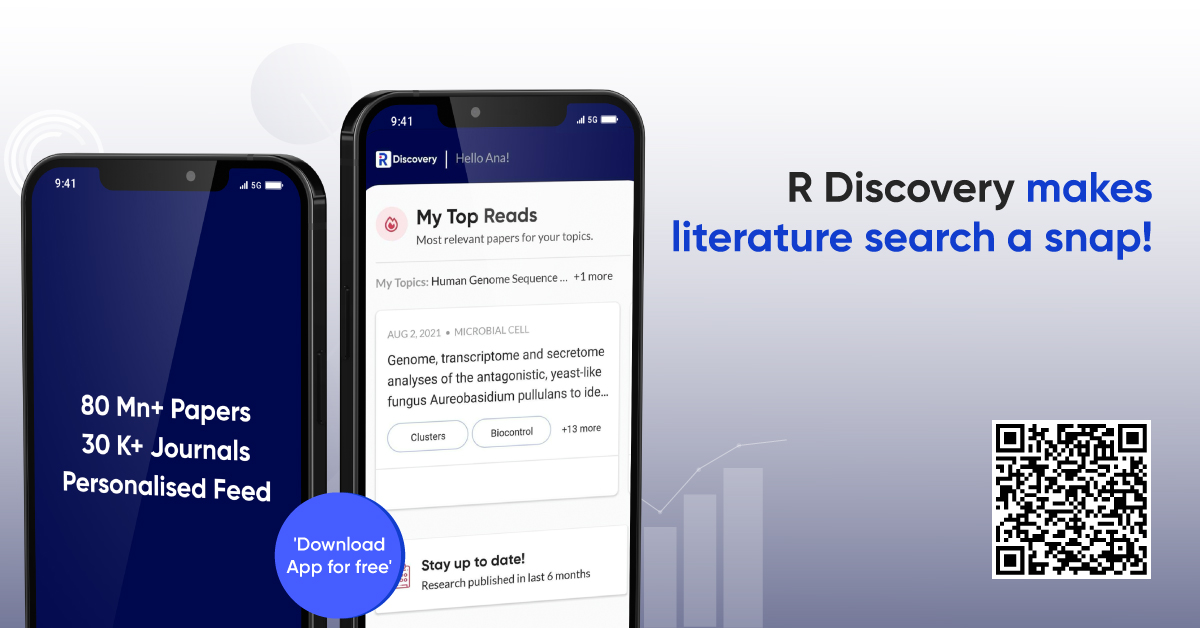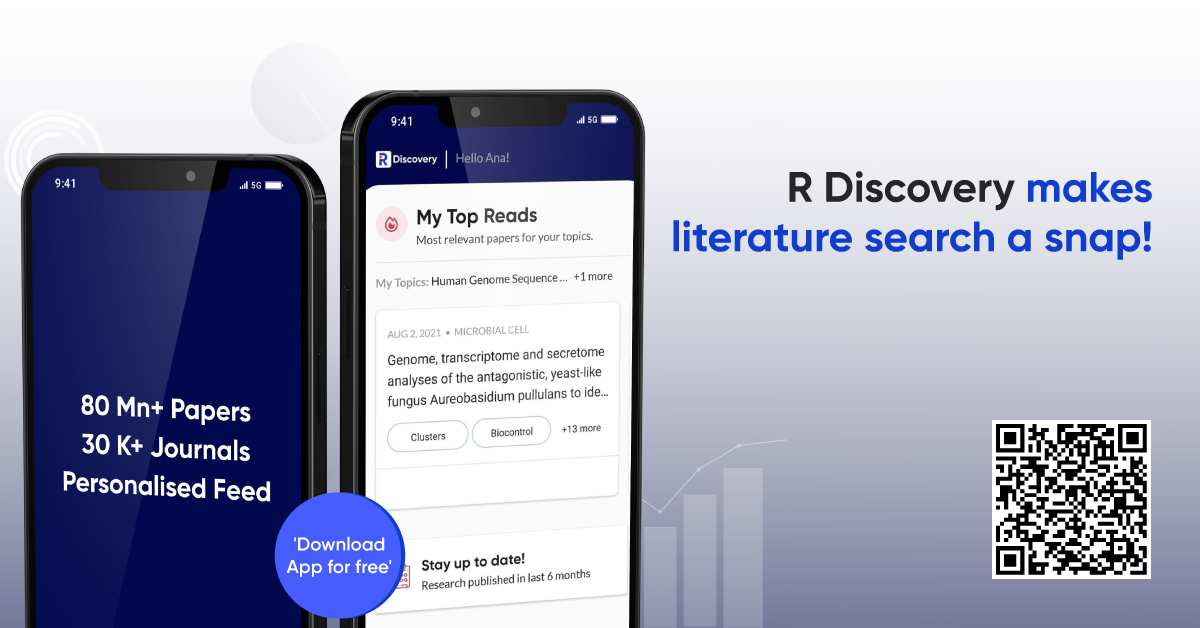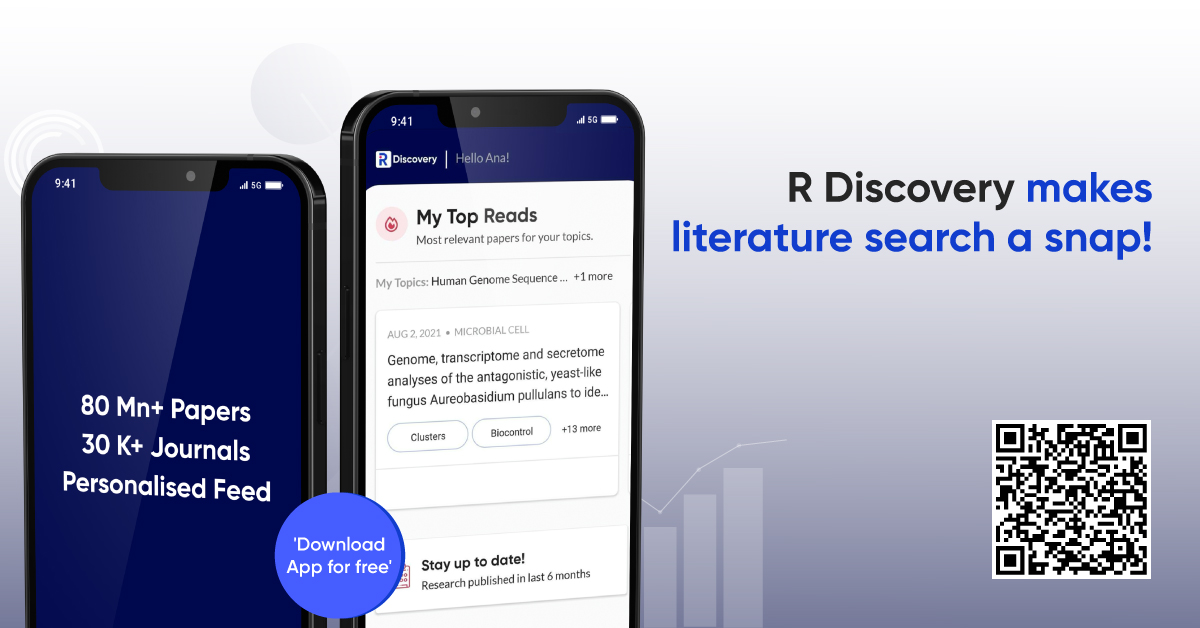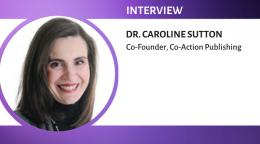Ask Me Anything About Open Access: Intl. Open Access Week 2021 Special

R Discovery is delighted to bring you this Ask Me Anything (AMA) event to celebrate International Open Access Week 2021! We invited a panel of industry experts to answer questions on open access that members of the research community shared with us.
Our panelists are Dr. Caroline Sutton (Director of Open Research at Taylor & Francis), Vrushali Dandawate (Head Librarian at AISSMS College of Engineering, Pune; DOAJ ambassador for India), and Andrew Stammer (Director of CSIRO Publishing). To read more about them, visit this page: https://bit.ly/AMA_OA_announcement.
Disclaimer: The views and opinions expressed by the panelists are their own and do not necessarily reflect the views of R Discovery, Editage Insights, or affiliates.
1. Will publishing open access further my career? How much status is awarded to open access publications? How are open access publications reviewed?
Caroline: Publishing your work open access can benefit your career. For example, articles published open access with Taylor & Francis (https://think.taylorandfrancis.com/position-on-open-research/) typically receive over 6 times as many downloads and 32% more citations compared to those that are not published Open Select. Similarly, Springer Nature (https://www.springernature.com/gp/researchers/the-source/blog/blogposts-...) report that the OA monographs they publish on average receive 50% more citations, 7x more downloads, and 10x as many media mentions.
Status can be understood to mean different things. Increasingly, funders are requiring the work they fund to be published under an open access model, giving a higher status to open access articles than those behind a paywall when evaluating research outputs and assessing applications for funding. Traditional prestige measures such as indexing and impact measures might also apply to an open access publication you are considering and will be listed on that publication’s website, often alongside alternative metrics that indicate dissemination and impact.
Serious open access publications such as those listed in the DOAJ (http://doaj.org/) subject all submissions to the same peer review practices and other scrutiny that is applied to subscription journals to ensure that only sound and robust research that meets with a journal’s aims and scope is published.
Vrushali: Yes, as long as you publish in a quality-controlled journals, like journals indexed in the DOAJ (Directory of Open Access Journals). Open access publications will help you to get wider visibility for your research, which will help you get more citations. A rigorous peer review method is used in high-quality open access publications. This indicates that the article's quality, validity, and relevance have been evaluated by peers in the area.
Andrew: Doing great research will further career prospects most. Where and how you publish your findings will help. By publishing your work in a reputable journal and as open access, you improve the chances of your work being seen and read. This is where the advantage of OA lies – you reach a larger readership.
2. As a small publication, our board is pressing us to move to open access. My understanding is that exactly what open access is, is flux so what factors should we be considering in making our decision? How expensive is it? Will we disadvantage certain author groups (DEIR) if we make this move? How do we ensure that every author has the opportunity to publish their work if it is publication worthy?
Caroline: While the definition of open access is fairly constant, there is a great deal of discussion, debate, and activity at present centered on transitioning subscription content to open access and on how those purchasing subscriptions can transition their spend towards open access. This transition is challenging for large publishers and particularly challenging for smaller enterprises. I have no simple answer to offer and hope some advice on where you can turn for support will be helpful.
First, if your journal is being published through a scholarly publisher, I would encourage you to raise this with your publisher who will be positioned to guide you. At Taylor & Francis, we are regularly involved in modeling possible routes to open access with our publishing partners and with editors and editorial boards. If you are publishing your journal independently, you could also turn to a publisher to consider a publishing partnership.
Alternatively, I would encourage you to reach out to a DOAJ Ambassador who can help guide you towards some resources. A number of university libraries are now offering services to support independent titles and can similarly guide or support you in investigating these. You might also find it useful to take part in publishing conferences, where open access is a regular topic. This could provide both information as well as networking opportunities.
Finally, you might wish to consult this catalogue of societies with open access titles (https://cyber.harvard.edu/hoap/Societies_and_Open_Access_Research). This catalogue was originally created with the hope that those considering a transition to open access might find an organisation or group similar to themselves and be able to reach out to hear about their experiences.
Vrushali: While there are many different types of open access, I wouldn't say that open access is in flux. There are well-established models of open access publishing. There is green open access, gold open access, and more recently, diamond open access. To make content open access, a journal's board needs to consider access and licensing of the content.
Some say that true open access is the definition clearly laid out in the Budapest Open Access Initiative (https://www.budapestopenaccessinitiative.org/read): “free availability on the public internet, permitting any users to read, download, copy, distribute, print, search, or link to the full texts of these articles, crawl them for indexing, pass them as data to software, or use them for any other lawful purpose, without financial, legal, or technical barriers other than those inseparable from gaining access to the internet itself. The only constraint on reproduction and distribution, and the only role for copyright in this domain, should be to give authors control over the integrity of their work and the right to be properly acknowledged and cited.”
There are bound to be editorial costs in changing/adding licensing terms to content and to a website. There may be technical costs in opening up access to content on the website. I can't comment on how expensive it is as that will vary from journal to journal. There are some very good published resources on how to flip a journal to open access, e.g., https://blog.scholasticahq.com/post/how-to-start-flip-open-access-academ..., https://sparcopen.org/our-work/transitioning-your-journal/, and numerous blog posts and published articles: https://bit.ly/3jGAXS7.
The main way that authors are disadvantaged by open access is when publishers charge high article-processing charges (APCs), often over-inflated, and offer no waiver to those who cannot pay. It should be underlined, however, that there are many, many open access journals that do not charge APCs. 69% of the journals in DOAJ don't charge an APC: https://bit.ly/362S1LJ. Offering waivers ensures that researchers aren't excluded because they or their institution cannot pay.
Andrew: If your journal is currently sustained by subscriptions, then flipping it to open access will involve also flipping the journal’s business model, most likely to an author-pays model. This is no small task as you will transition from selling a product carefully crafted to appeal to certain readers, to selling a publishing service designed to attract certain researchers.
Some things shouldn’t change – your commitment to rigorous and ethical peer review, for instance.
One approach might be to work out what revenue you need to secure to stay in business. Then consider how many articles you publish each year. Divide the revenue by the number of articles and you’ll have an indication of the price you need to charge for each published article. You’ll need to think about how your authors are going to secure the fees you plan to charge and your submission, peer review and production services need to be competitive – the authors will expect value for their money. Your marketing of the journal will need to target the authors in order to attract submissions to the journal.
If your authors are from the same institutions as your subscribers, then you should explore negotiating a Read & Publish deal (https://scholarlykitchen.sspnet.org/2019/04/23/transformative-agreements/) with the subscribers. In this model, the institution pays the publisher for both access to non-OA content and for publishing the institution’s articles OA.
3. The Scientific and Technological Research Council of Turkey does not accept articles that are printed in journals that demand a fee or additional fee from the author for publication after the acceptance for the associate professorship application. These open access journals are interpreted as predatory journals. It is indicated that this relationship contains a conflict of interest. What do you think about this?
Caroline: We understand that the policy notes that if a journal announces at submission that they charge fees, they are not considered to be predatory; but those that demand additional fees during the publishing process are predatory. If this understanding is correct, then there shouldn’t be a conflict of interest as it is good (and standard) practice for journals and publishers to be transparent about costs.
For example, at Taylor & Francis, we provide guidance on all publishing charges on our websites, and also on journal websites. We are implementing changes to our submission process on fully OA journals so that we present authors with information around the article publishing charge and a quote before they complete their submission. We hope that this provides maximum transparency to authors, and meets the STRC policy criteria.
Vrushali: Open access journals operate according to various models. Charging APCs is very common and in no way a sign of predatory behaviour. Predatory journals are journals that do not operate according to good publishing practices, i.e., offer no peer review, have short acceptance times, list people as board members without their knowledge, ask for payment before acceptance of an article, and more.
The idea that APC is linked to predatory is completely wrong, as wrong as the idea that open access journals are low quality. Just to give an example, most open access journals published by big publishers like Elsevier, T&F, Wiley, Frontiers, and PLOS charge APCs and are certainly not predatory.
Andrew: Not all open access journals are predatory journals and increasing numbers of reputable journals operate an open access business model. Many reputable publishers are operating Read & Publish deals. If an R&P deal is negotiated between a publisher and an institution, then the institution continues to pay a fee and researchers at the institution can publish OA in the publisher’s journals at no additional charge to the researcher. It may be worth alerting the Turkish authorities to this model. Reputable OA journals are listed in the Directory of OA Journals (https://doaj.org/).
4. Some open access journals are publishing without cost. In these journals, if the paper is accepted, we get more citation or not? And what is the difference between open access journals with publication charge and without publication charge? And in many journals the waivers are provided except India. Why?
Caroline: Some journals are financed through a grant or subsidy that covers all associated costs for publishing with and sustaining the journal. For example, we find this model among titles that are owned by a society. These journals can offer the best of both worlds: free to read and free to publish with!
Other titles do apply an article publishing charge (APC) or publication fee. This might be covered by an author’s institution through a variety of different types of agreements, by the researcher’s funder, or other means. Most publishers have established waiver policies. Waiver policies due vary between publishers as different publishers use different definitions to frame their policies. Examples include definitions from World Bank, HINARI, and the OECD. These definitions can explain why researchers from India are sometimes granted an automatic waiver and are sometimes not granted one.
Vrushali: The quality of open access journals does not depend upon whether they charge APCs or not. You will get more citations if your paper's contents are good and useful for other researchers in your subject area. Some open access journals charge an author an APC, a submission fee, or both for publishing their work.
There are other open access journals linked with universities, research institutions, societies, associations, and other organizations that publish without charging an author fee. All of these open access publications, on the other hand, do not charge readers a subscription price. Open access journals allow readers to view, reuse, and/or download articles according to the rules described in an open access license without having to pay for them.
India is a developing country and the Indian economy is now becoming stronger than the economies of other developing countries, so many journals do not extend the fee waiver policy to Indian researchers. But the fact is that very few universities and research institutes in India have funding policies for OA publishing.
5. Considering the costs of publishing, how can the sustainability of open access be ensured in the long run?
Vrushali: Article-processing charges are helpful for covering the costs of long-term preservations and sustainability of research in open access. In open access publishing, publishers are committed to making their content broadly available and accessible, so open access journals are sustainable in the long run. Apart from this, many journals follow different archive policies.
The cost of publishing is different from the prices paid to publishers. Subscription costs of traditional journals are quite high since shareholder interests need to be satisfied. In case of a 100% open access situation, control should be in the hands of researchers, universities and funders, which will make publishing cheaper and sustainable in the long run.
6. Does open access equate to free access?
Caroline: Open access encompasses two things. The first is free access to the item, i.e. free to read. The second element is re-use rights. The latter is typically enabled through the application of a Creative Commons license. The Open Access Scholarly Publishing Associations (OASPA) recommends the CC-BY license, though other licenses are sometimes applied.
Vrushali: No, open access is not just free access, it is unrestricted immediate access to research where usage conditions are described in a license and copyright conditions are clear. Open access refers to internet access to research outputs that is free and unfettered. There are no costs to access OA content, and it is available to everybody.
Andrew: Open access is generally defined as being ‘free to read’. The processes of publishing require work and that needs to be paid for. So, if the readers don’t pay, then someone else needs to. Author-pays is an alternative means of raising the required funds. Some learned societies sponsor their journals from membership fees, in order to make their journals OA.
7. What is your opinion on hybrid journals? How do they fit in with the global shift toward open access?
Caroline: Taylor & Francis are committed wherever possible to moving journals to a full OA model. We do think that hybrid journals have a role to play in offering authors the choice of publishing OA in their preferred journal venue. We acknowledge that there are concerns around hybrid journals but as open access material increases in hybrid journals, we review the cost of the subscription and reflect pricing through our global offset policy approach.
In Arts, Social Sciences, and Humanities (HSS), the challenges around establishing full OA venues are considerable. This is due to the nature, size, and selectivity of typical HSS journals and compounded by the funding methods available for these disciplines as well as the geographic spread of submitting authors. Where full OA is not currently viable, hybrid OA is an important option to offer to sustain research quality, especially in HSS disciplines.
Vrushali: Hybrid journals are also useful for research scholars because in hybrid journals, some articles are available in open access. They are useful for authors if they have funding available to publish in particular journals. Most hybrid journals allow authors to archive the accepted version of their research in repositories, so for hybrid-journal publishers, this can be a step towards open access, but in practice, many do not flip to open access.
Andrew: Hybrid journals have allowed publishers to offer an open access option to their authors, which has done much to increase the amount of research that is published OA. I think they’ve been useful in helping publishers transition to OA models. Some people see charging a subscription for content that includes author-paid OA articles is double dipping or paying twice for the same content. As a publisher, each year my business has budgeted to publish a certain number of subscription articles, and if authors pay for OA, then these papers are published in addition to the subscription quota.
8. How could open-access impact the access to the scientific literature data? How could it improve researchers' impact and visibility?
Vrushali: Scientific research reveals that publishing under open access results in higher citations and influence because of the global visibility without barriers. Many studies have found that OA publications receive a maximum number of citations (https://www.ncbi.nlm.nih.gov/pmc/articles/PMC3133904/).
9. In terms of processing the article and getting a quick response from reviewers, is there a difference between open access and other journals? What are the advantages and disadvantages of open access?
Caroline: Review times are not dependent on whether the journal is subscription or open access. That said, open access publications tend to regard the author as the primary customer due to the business model. Because of this, open access publications were among the first to think about how to improve review times while retaining high-quality review.
Vrushali: Good-quality open access journals generally follow the same peer review procedures as subscription journals. There is no systematic difference in review times between open access and subscription journals.
Open access journals are freely available to all for access. Other journals which are non–open access are initially only visible to people at institutions which have a subscription to these specific journals.
Advantage of open access: Visibility of research to a broader audience, greater number of citations, free access to knowledge
Disadvantage: Provision of financial support for APC charges not offered by many universities and institutes to publish in OA
Andrew: Open access should not affect the conduct of rigorous and ethical peer review. That said, some unscrupulous people have exploited a researcher’s need to be published by charging an author publication charge and then not conducted any peer review. Such “publishers” are described as predatory. They should be avoided. Reputable OA journals are listed in the Directory of OA Journals (https://doaj.org/).
10. How can a researcher publish article in an open access journal without the high cost being charged?
Caroline: As a publisher, I get asked this a lot, and actually many researchers don’t realise that they often don’t have to fund this charge themselves. To give two examples of common funding sources:
1. Funders often allow grant funding to be used for publication charges including article-publishing charges, so it’s worth checking your grant agreement to see if this is allowed.
2. T&F, like other publishers, has agreements with many libraries around the world that allow their faculty to publish in journals on an open access basis (for example, see our information here: https://authorservices.taylorandfrancis.com/publishing-open-access/oa-ag...). Institutions have already covered the cost for publishing OA as part of the agreement. We’d encourage researchers to speak with their librarians to determine whether these options are available.
Additionally, if you are based in a low-or-middle income economy, as defined by the World Bank, T&F may be able to offer you a waiver or a discount on publication costs. Further information can be found on our website (https://authorservices.taylorandfrancis.com/publishing-open-access/reque...).
Lastly, we offer a range of publishing venues, and these include journals that publish OA without any article-publishing charge (sometimes called Diamond OA journals). These are often supported by a learned society who funds the journal, meaning that researchers can publish on an open access basis without paying a charge themselves.
Vrushali: Researchers can look at the list of journals from the Directory of Open Access Journals site, where 69% of the journals don't charge an APC: https://bit.ly/362S1LJ. Many journals have a fee waiver policy for authors from developing countries. Also, check your university or institute policies to check if there is any support for APCs.
11. How can researchers be convinced about the practical benefits of OA?
Caroline: This question gets to the heart of an important issue. It can be easy to get caught up in the notion of open for the sake of open, when what the early movement for open access was trying to achieve was open for a purpose. That is, open can facilitate a connection, for example, that might not have been possible without open access.
Over time, as a greater volume of content is open access, we will begin to see how open access can contribute to a robust and reliable scholarly record, rapid dissemination, and real-world impact. We witnessed some of this during the COVID pandemic, which now offers food for thought on how open can be leveraged well for societal and global gains, and what pitfalls we need to avoid to ensure decision making is made on the basis of solid research.
In the shorter term, advocacy remains key. While the evidence will begin to speak for itself, there continue to be areas of concern that need to be addressed:
Firstly, some researchers think open access publishing is low quality. We want to be clear that all content published in our journals benefits from peer review and scrutiny, regardless of what model is it published under. Likewise, all of our journals have clear policies around ethics and research integrity. We’d advise researchers to check journal websites before submitting to ensure that they have peer review and ethics policies in place.
Secondly, we also hear concerns around so called predatory publishing, where works are not subjected to scrutiny and validation. The Think. Check. Submit (https://thinkchecksubmit.org/) guidance is a great resource for researchers to use, so that they can be confident that they have chosen a legitimate venue for their work.
Finally, I would suggest speaking to colleagues who may have published OA in the past to hear about their experience, and carefully selecting a publication venue that will be a good home for their work.
Vrushali: Practical benefits of open access are many:
All articles published in open access are publicly accessible and downloadable in their entirety: users of open access journals, primarily other researchers, are not required to pay any subscription or pay-per-view fees in order to read articles or use the data in their own work. Open access publications are demonstrably more frequently cited. Open access can provide free and easy access to knowledge; is helpful in the generation of new ideas, research, and innovation; and can build collaboration among researchers.
12. How do you tackle issues of copyright in open access?
Caroline: As noted above, open access differs from our definition of free access because it also covers and supports reuse. Ideally, content is published with clear information on how it can be reused, built up, remixed, and so on. The Creative Commons license suite has become a standard for publishing scholarly works on an open access basis, as the licenses clearly outline how works can be reused.
One common misconception is that this means that the authors have to give up their copyright, but the Creative Commons licenses have the concept of ‘attribution’ at their heart. This means that anyone reusing the content must credit the original creator of the work.
Vrushali: Though authors own the original copyright to their work, when they publish, they are frequently required to transfer these rights to the publisher, who then sets the terms for granting open access. Most open access journals prefer the Creative Commons CC BY 4.0 license for publishing (https://creativecommons.org/licenses/).
Andrew: Under most jurisdictions you own the copyright in your work, unless your employer claims the copyright as part of your employment arrangement.
When you submit your work to a journal, the journal’s owner (publisher or society) will likely ask you to either assign the copyright, or to licence the copyright to them. Assignment means you give to the journal owner your copyright, in return for which they publish and grant back to you certain permissions to reuse your work. By licencing copyright to the owner, you give them exclusive permission to publish the work, but you retain the copyright. In both cases the assignment/licence-to-publish form that you sign will describe what you may do with your work after it has been published.
If you choose to publish your work open access, the publisher will usually apply a Creative Commons License (https://creativecommons.org/licenses/) to the work. This tells the reader of your work what they may and may not do with your work.
The simplest Creative Commons License is marked CC-BY. This indicates the reader may reuse your work, but they must attribute the work to you as the original author. Reuse of the work can mean the reader may copy, share, excerpt, republish, exploit commercially, create derivatives of your work, all without needing further permission from you or the publisher. There are more restrictive CC Licences that limit what the reader may do with the work.
13. Why open access journals ask the authors to pay APC? What are the benefits of authors to publish their paper at open access journals?
Caroline: The APC model provides funding that that allows publishers to keep running journals, and to recoup the investment made in to validating, producing, disseminating, and curating research outputs.
The charge covers a variety of costs including but not limited to financial support for journal editorial offices and boards, submission and peer review management, editorial development, ethical validation and plagiarism checking, content enrichment (copyediting, typesetting, data conversion and normalization), legal deposit, abstracting, and indexing. The charge also covers dissemination and the curation and display of metrics to help researchers understand the impact and reach of their work. Surplus from the charge is invested in infrastructure and organizations that support scholarly communication. These organizations include registration services and standards bodies, in particular, those that guarantee the long-term preservation of each work.
Authors that choose to publish in an open access journal published by Taylor & Francis know that their work will benefit from all of the interventions outlined above, and can have confidence that we will ensure that it is disseminated as widely as possible, and will be available for the long term.
Those who are interested in understanding more about our approach to open access pricing, can read our position paper here (https://think.taylorandfrancis.com/open-access-pricing/?utm_source=CPB&u...).
Vrushali: Open access journals ask authors to pay for the cost of administering peer review, copy-editing, and hosting the final article on servers. The advantages of open access for researchers are having a broader audience, more possibilities to connect with other researchers to further their careers, and more citations, which is one of the criteria for “status.” An increasing number of organizations are now assessing research performance based on not the impact factor of the journal in which researchers publish but on the content of publication and the societal impact it has.
Comments
You're looking to give wings to your academic career and publication journey. We like that!
Why don't we give you complete access! Create a free account and get unlimited access to all resources & a vibrant researcher community.

Subscribe to Journal Selection
After writing a research paper, the next step is to find the right journal to publish it. Subscribe and get curated content to find the perfect journal that will give impetus to your research paper and your career.
















